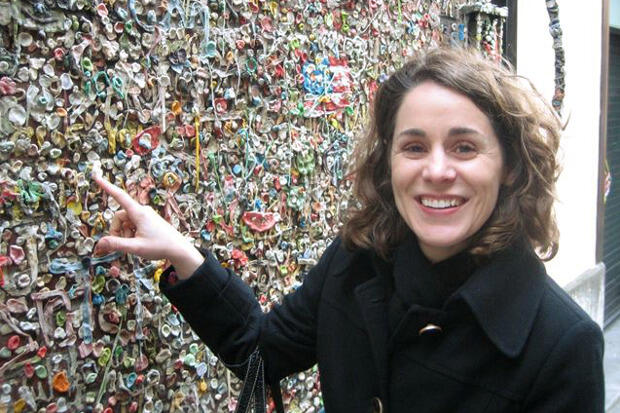
Sept. 2, 2015
Arts professor to lead workshops on symbols and memory of the Civil War
Share this story
When the equestrian statue of Confederate Gen. Robert E. Lee arrived in Richmond, packed in four crates, thousands of volunteers took turns on ropes to haul it to the still-undeveloped Monument Avenue. Those ropes were sliced up and kept as mementos of the occasion, according to contemporary newspaper accounts.
From such small items of everyday life during the Civil War and Reconstruction to towering statues, Richmond is bursting with original documents, artifacts and artwork of the era. Next summer, a Virginia Commonwealth University School of the Arts professor will lead workshops with K-12 teachers exploring symbols and memory of the Civil War.
Melanie Buffington, Ph.D., associate professor in the Department of Art Education in the School of the Arts, was awarded a $179,946 grant from the National Endowment for the Humanities in late July to support the project.
“It just seemed like a really good fit. The idea is that they want to bring groups of public school teachers to sites around the U.S. that have rich resources related to a humanities topic,” she said. “Because of the history and the art here in Richmond, it seemed like a particularly strong resource.”
Monument Avenue, where nearly all of the statues commemorate men who served the Confederacy, struck her as an underused learning opportunity.
“I frequently see buses of children heading to the Children’s Museum or the VMFA, but I’ve never seen people use the monuments as a teaching tool,” Buffington said. “Because they are made of these lasting materials, they continue to tell this very limited story to the present day. We could use the street to tell more stories.”
Cultural institutions including the American Civil War Museum, Virginia Museum of Fine Arts and the Virginia Historical Society are lending a hand with artifacts and experts to help the teachers understand how the legacy of the Civil War is presented today. Aside from Richmond’s sites, they will also visit Appomattox Court House National Historical Park, site of the Confederate Army of Northern Virginia’s surrender on April 9, 1865.
While in town, the teachers will capture their experiences to share with students in a collaborative, multimedia project.
“I’d like the teachers to document what we see at the sites, compiling the imagery into an open-source online map,” Buffington said. “When they’re back in the classroom, they have this resource that they built collectively and that their students can add to, as well. Learning is cyclical. Students can see their teachers learning and add evidence of their learning too.”
The workshops are planned for next summer, and Buffington hopes to draw participants from the region, state and across the nation.
“In particular, I’ll be targeting history teachers, visual arts teachers and language arts teachers, but anybody is welcome to apply,” she said.
In the midst of a national discussion on the presence of Confederate symbols, Buffington hopes these workshops will spur conversation about how we remember — and teach — the war.
I hope that the teachers will learn a more complicated view of the Civil War, and how it’s remembered today.
“I hope that the teachers will learn a more complicated view of the Civil War, and how it’s remembered today. There’s a variety of hidden stories, or stories that aren’t routinely presented,” she said.
Sara Wilson McKay, Ph.D., chair and associate professor in the Department of Art Education, said Buffington is uniquely situated to “help people consider the reasons they think what they think.”
“Because she’s been so thoughtful in the design of the workshop, it’s going to be an incredible gift to the educators and groups that come to experience a really intense and important conversation at the intersection of race, power, history and art,” McKay said.
“It’s a really apropos topic, very timely,” she added.
Buffington plans to follow up with the teachers throughout the 2016–17 academic year.
“I’m really interested to see what they’re able to implement within their own teaching,” she said. “I think it’s great to have programs like this to allow teachers to continue to learn and grow throughout their careers, and hopefully help them change their teaching or try some new ideas.”
VCU’s workshop was among $36.6 million in grants awarded this summer for 212 humanities projects. They included 13 projects in Virginia, funded for $2.9 million.
“The grant projects announced today represent the very best of humanities scholarship and programming,” NEH Chairman William Adams said in a statement. “NEH is proud to support programs that illuminate the great ideas and events of our past, broaden access to our nation’s many cultural resources, and open up for us new ways of understanding the world in which we live.”
In March, the National Art Education Association named Buffington as the group’s 2015 National Higher Education Teacher of the Year.
Subscribe to the weekly VCU News email newsletter at http://newsletter.news.vcu.
Subscribe to VCU News
Subscribe to VCU News at newsletter.vcu.edu and receive a selection of stories, videos, photos, news clips and event listings in your inbox.













